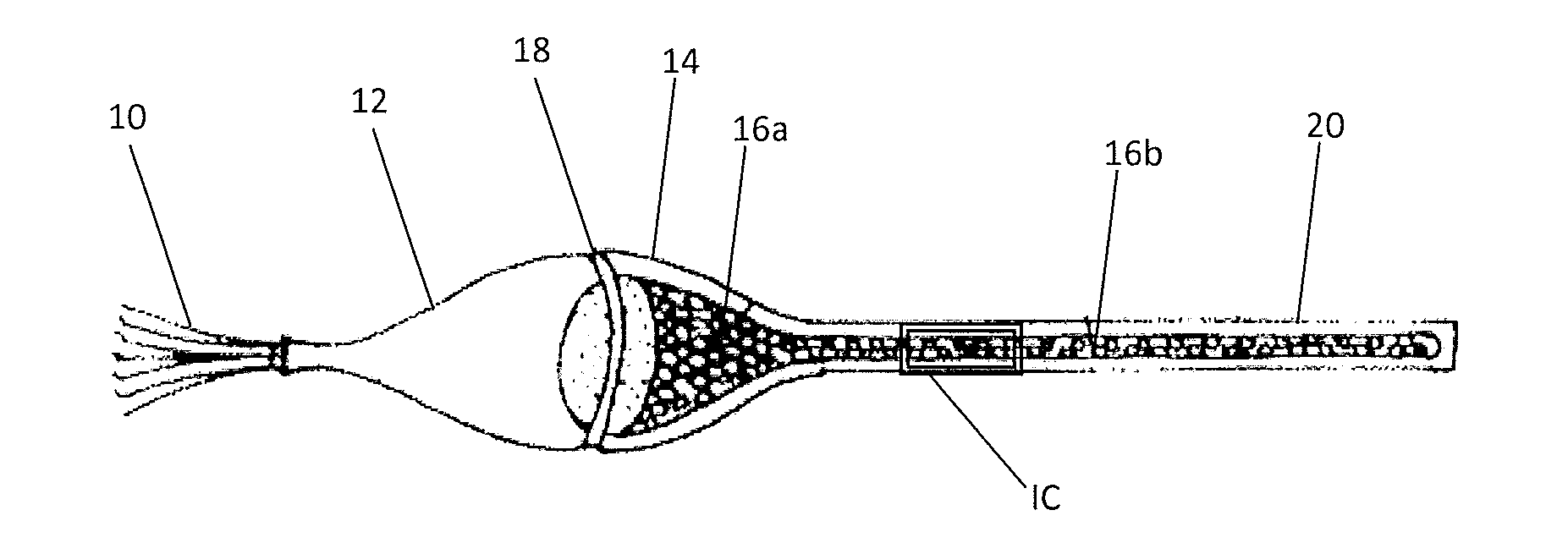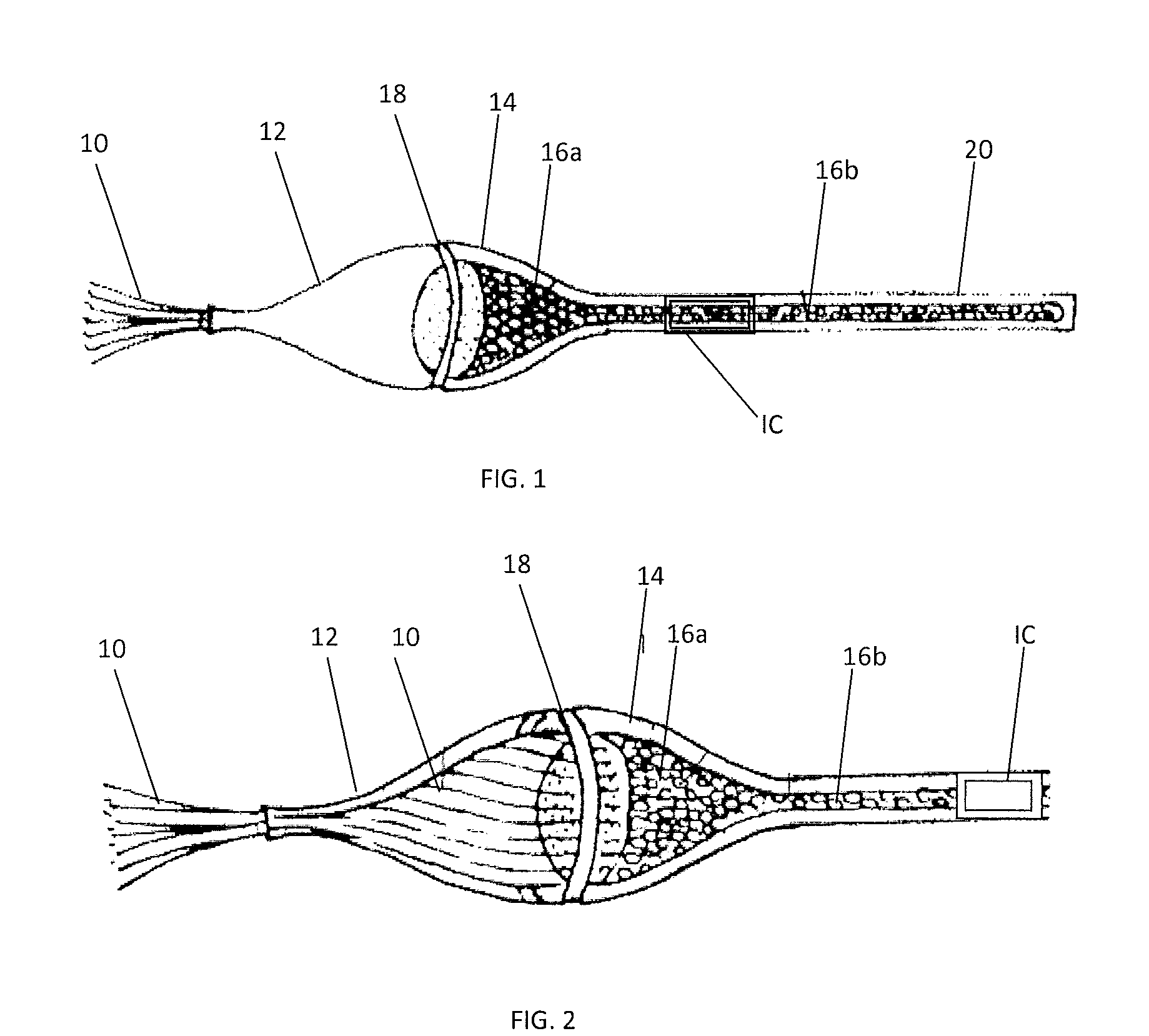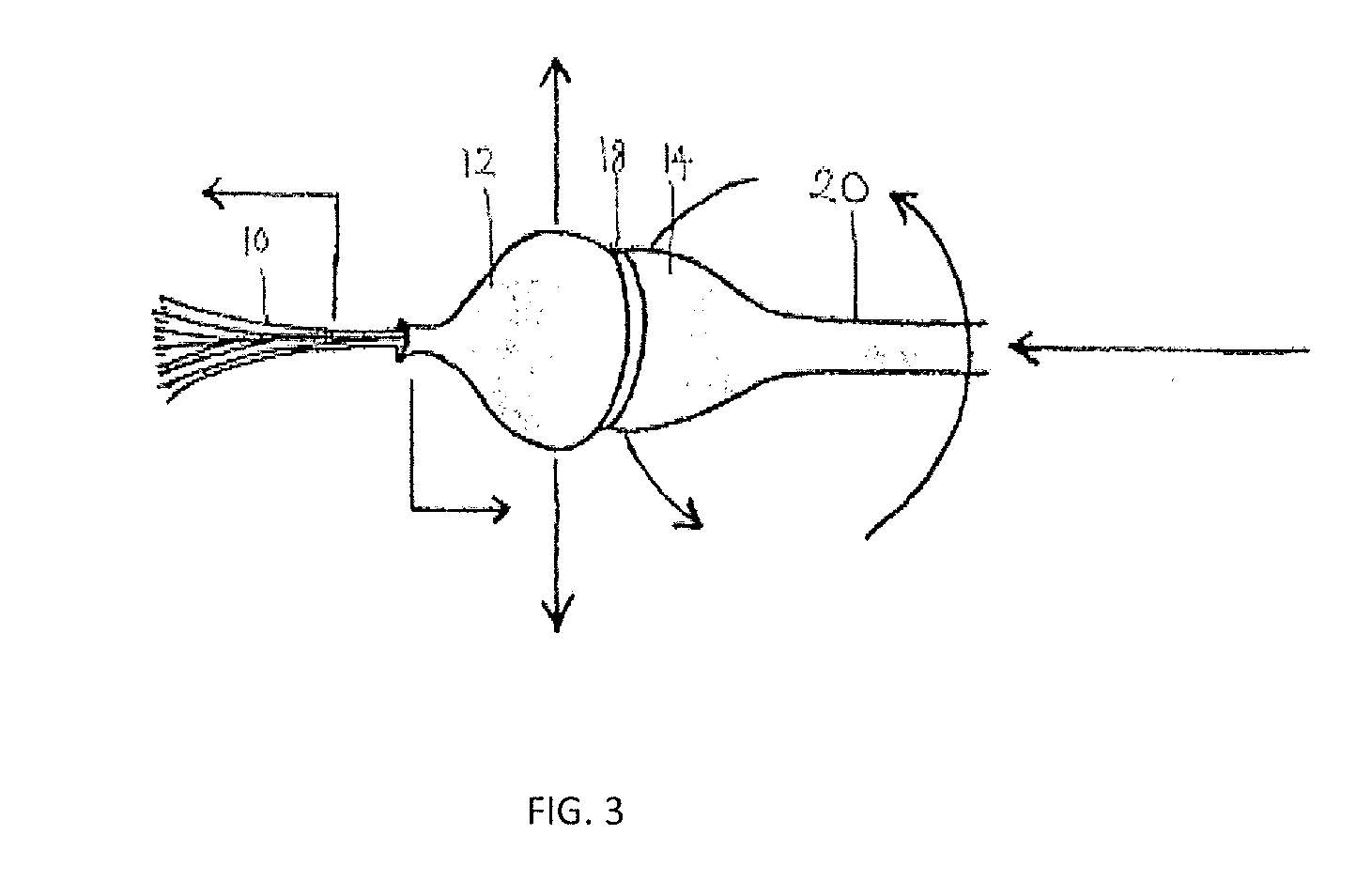H2O Cilia Head Swab
- Summary
- Abstract
- Description
- Claims
- Application Information
AI Technical Summary
Benefits of technology
Problems solved by technology
Method used
Image
Examples
Embodiment Construction
[0041]FIG. 1 shows a perspective view of the present invention. The microcilios 10 are “hairlike” micro suction fingers or filaments made from soft ultra absorbent material. Their primary function is to absorb liquid accumulation in the auditory canal, to alleviate discomfort and infection potential. The microcilios 10 (also referred to herein as absorbent filaments) protrude from an opening in an oval capsule composed of a pivot capsule 12 and a cilia capsule 14. Specifically, the microcilios 10 protrude from a small opening located at the extreme end of the pivot capsule 12. The pivot capsule 12 and cilia capsule 14 are held together by a rotary channel 18 that allows for both rotational and pivotal functions. The cilia capsule 14 connects at its lower end with the extension element rod 20 of the present invention that serves as a handle that enables projection of the microcilios 10 by rotational manipulation. Inside the cilia capsule 14 and the extension element the device is fil...
PUM
 Login to View More
Login to View More Abstract
Description
Claims
Application Information
 Login to View More
Login to View More - R&D
- Intellectual Property
- Life Sciences
- Materials
- Tech Scout
- Unparalleled Data Quality
- Higher Quality Content
- 60% Fewer Hallucinations
Browse by: Latest US Patents, China's latest patents, Technical Efficacy Thesaurus, Application Domain, Technology Topic, Popular Technical Reports.
© 2025 PatSnap. All rights reserved.Legal|Privacy policy|Modern Slavery Act Transparency Statement|Sitemap|About US| Contact US: help@patsnap.com



